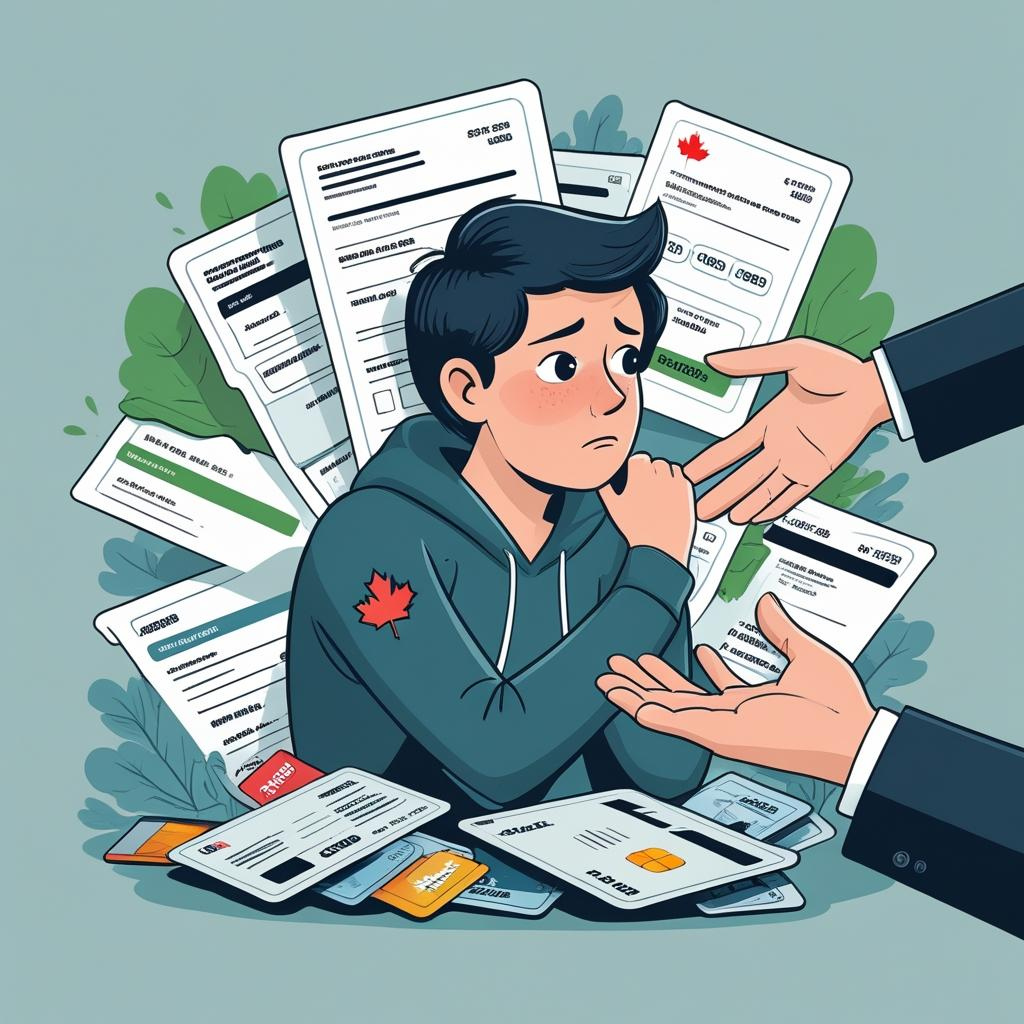8 Real Reasons Canadians End Up in Debt — And How to Take Back Control

Debt has become a common fixture in so many lives and even in the life of our nation. Sometimes it builds slowly, while at other times it appears all at once. It can feel like it has a life of its own. But the truth is, every bit of debt comes from somewhere, a decision, a crisis, a pattern, or a habit. More Canadians are holding debt than ever before. The average Canadian has over $20,000 in debt and is currently spending $1.71 for every dollar they earn.
When we understand the reasons behind our debt, we’re better equipped to change course, make a plan, and move forward. Here are 8 of the most common causes of debt in Canada, and how we can respond to each.
1. Emergencies: The Unplanned & Unavoidable
Sometimes debt is necessary. Storm damage is not covered by insurance. An illness. A major car or home repair. These emergencies often blindside us and force us to rely on credit. Since I moved into my current place, I have had a flood twice and we lost part of the roof. I have also lived through a fire and hurricane damage. I am currently on short-term disability as I recover from surgery. I get that life can get messy.
Do you plan for your emergencies?
Do you have a savings account that can soften the blow?
Most of us don’t … Start small: even $500 in an emergency fund can help keep your next crisis off the credit card.
Solution: Build a mini emergency fund and revisit your insurance coverage. Even stocking $25 a paycheque helps you when hit with those larger experiences. Yes, the goal for an emergency fund should be 3-6 months of expenses but most Canadians today can not afford it so start smaller.
2. Impulse Spending & The “I Want It Now” Mindset
We live in an instant world. A tap or swipe and the thing we want is on its way. Credit has made it so easy to act on emotion rather than logic. How many times have you gone in a store and bought something you did not need or want before you stepped foot in said store?
But if you don’t have the cash, will you really value it in the same way?
Impulse buys lead to lingering bills. That moment of joy? It fades. But the payment often remains with interest.
Solution: Use the 24-hour rule before any non-essential purchase. Ask yourself: “Will this still matter tomorrow?” I have this rule in place for any purchase over $25. Wait 24 hours, and if you can justify the purchase and it won’t cost you interest, then you can do it.
3. Keeping Up With the Joneses
Ever feel a twinge when your neighbor gets a new car, your friend posts vacation pics, or your sibling renovates their kitchen? Here on my street, I witnessed 4 neighbours all do yard renovations in the space of 1 year. Really, it seemed like a competition of who was designing the nicer yard and walkway.
Jealousy, pride, and social pressure are real — and dangerous. Watch for it.
Many people take on debt not to meet needs, but to maintain an image. The need to show up or show off can cost us long-term peace.
Solution: Focus on your goals, not someone else’s lifestyle. Unfollow accounts that make you feel “less than.”
4. Always Needing the Latest and Greatest
Tech, fashion, hobbies — they’re fun. But constantly upgrading comes with a price. That new phone or gadget may be shiny, but it isn’t always necessary. Do you NEED a new phone every 2 years or is that a want? I am shopping for a new computer this year and have already decided I will be taking my current desktop to the repair shop and upgrading it there instead.
Is it truly an upgrade — or just a habit?
Over time, these “small” upgrades become big expenses. And if they’re being financed? Even worse.
Solution: Use what you have longer. Set time or savings goals before any upgrade. You really can stretch that phone for an extra year or two. For those with teens in the house, they can wait for the latest and greatest till they have a job.
5. Lack of Knowledge and Support
Most of us were never taught how to manage money. We weren’t shown how to budget, plan, or understand credit. Without guidance, it’s easy to feel lost — and rely on debt just to get by. Before starting this blog, years ago, I was financially illiterate. When I started having real money conversations, support and knowledge came.
Managing money isn’t about being smart — it’s about being supported.
Financial education, mental health support, and good tools make a huge difference.
Solution: Find a system that works for you — whether it’s a free budgeting app, a notebook, or a support group. There are several Facebook Groups that online communities that will help you get that education and support.
6. Rising Cost of Living & Basic Needs
Sometimes debt isn’t about wants — it’s about survival. With grocery prices, rent, transportation, and utilities all rising, many Canadians are using credit just to cover essentials. I know my expenses have increased over the last 2 years while my salary has remained the same.
When income doesn’t match expenses, debt fills the gap.
This isn’t failure — it’s the reality of many working families.
Solution: Review your budget monthly. Explore support programs, food banks, and cashback apps to reduce the gap. Every quarter, I am looking for new ways to cut the grocery budget and be able to save. Please leave the food bank, though, for those who need it (2 million Canadians rely on it monthly).
7. Student Loans & Education Costs
Post-secondary education is expensive — and for many, it’s the first real encounter with debt. With interest and low entry-level wages, student debt can take years to repay. I know many, many Canadians are still paying 10 to 20 years later. My student loan debt led me to bankruptcy.
Starting adult life already in the red creates long-term stress.
Solution: If you’re still paying, look into income-based repayment programs or government relief options. If you’re preparing for school, look for grants and scholarships first. I actually encourage a gap year to work, then go.
8. Doing Too Much for Others
This one hits close to home for many. Whether it’s helping our kids, supporting parents, or bailing out friends — we often say yes when we don’t have the financial room. We feel the obligation. Many new to Canada also feel the obligation to send money home to support others.
Generosity is beautiful, but debt isn’t a gift you should carry alone.
Solution: Set healthy financial boundaries. Help in ways that don’t cost money, or look for community resources that can step in. Become a resource for others, not a bank.
Final Thoughts: Your Debt Has a Story — But It’s Not the End
Every dollar of debt has a reason.
And once you understand that reason, you can write a new chapter.
Debt doesn’t define you. Whether you’re dealing with $500 or $50,000 of it, you have the power to understand it, learn from it, and start again. Please know it ok to start rewriting your debt story at any age and stage.

Leave a Reply